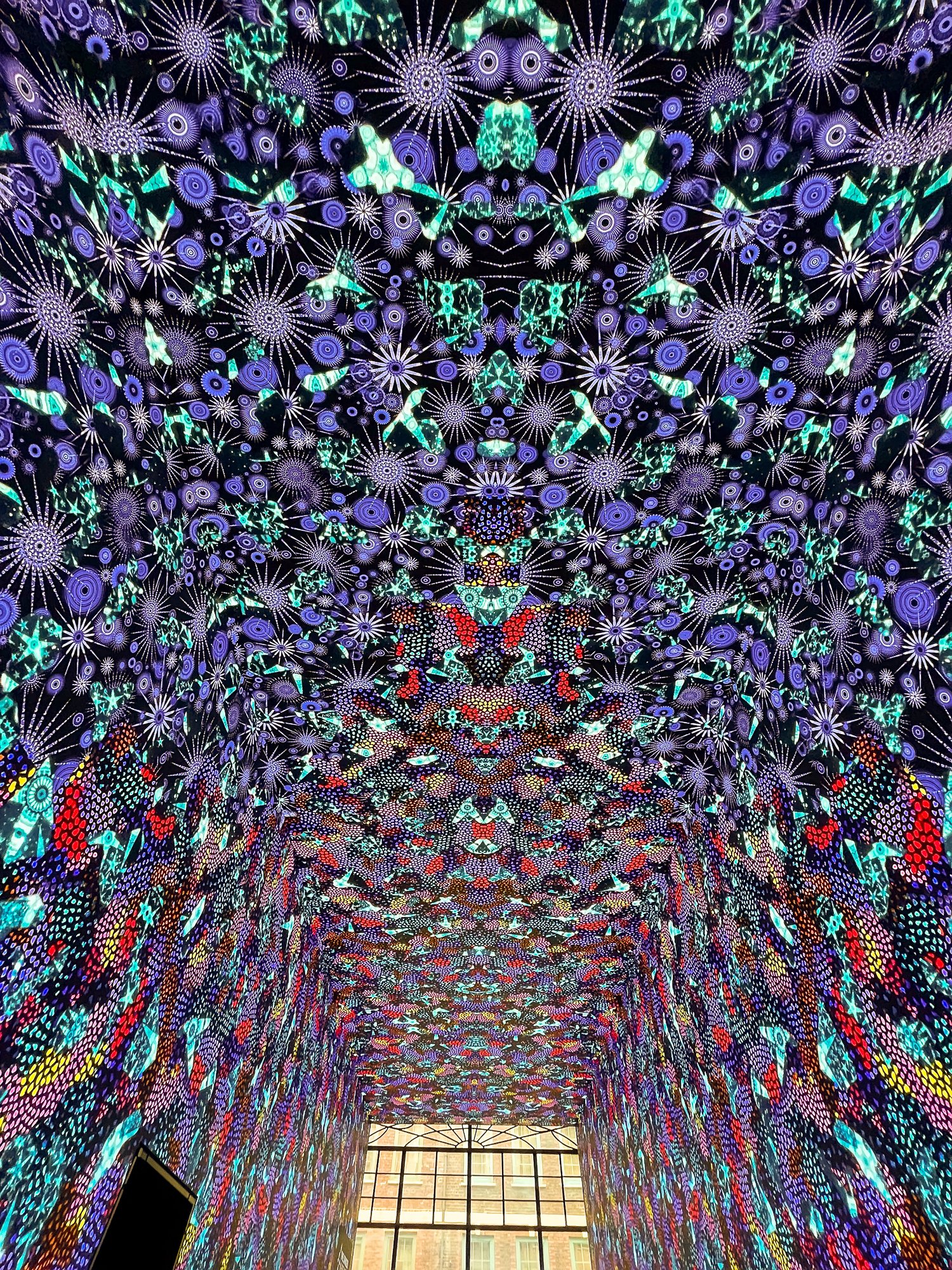Before we could eat our lunch today, we had to find the place we wanted to visit—and that was half the fun. Ginza Kagari Soba Honten is tucked away in one of those quiet little back alleys in Ginza, the kind of spot you’d walk right past if you didn’t know what you were looking for. But once you do find it, you’re in for something special.
This place has been around since 2013 and quickly built a name for itself, mostly thanks to its Tori Paitan Soba—a rich, creamy chicken ramen that people will happily queue for (and queue we did!). The silky broth is made from chicken meat and bones simmered for hours. It’s surprisingly light for something so rich, layered with umami from a blend of seafood, kelp, shiitake, and mineral-rich salt. You can also get it with shaved truffle on top (which Marcin did).
Zanim mogliśmy dziś zjeść lunch, musieliśmy najpierw znaleźć rameniarnię, którą mieliśmy na myśli — i to była połowa frajdy. Ginza Kagari Soba Honten ukryta jest w jednej z cichych, wąskich uliczek Ginzy, w takim miejscu, które łatwo przeoczyć, jeśli nie wiesz, czego szukasz.
Lokal działa od 2013 roku i dość szybko zyskał sobie renomę, głównie dzięki Tori Paitan Soba — bogatemu, kremowemu ramenowi z kurczaka, na który ludzie bez marudzenia ustawiają się w długej kolejce (staliśmy i my!). Ich jedwabisty w konsystencji bulion powstaje z mięsa i kości kurczaka, gotowanych przez wiele godzin. Zaskakująco lekki jak na tak treściwy smak, z silnymi akcentami umami dzięki mieszance owoców morza, wodorostów kombu, shiitake i soli bogatej w minerały. Można też zamówić jego wersję z tartą truflą na wierzchu (i Marcin tak właśnie zrobił).



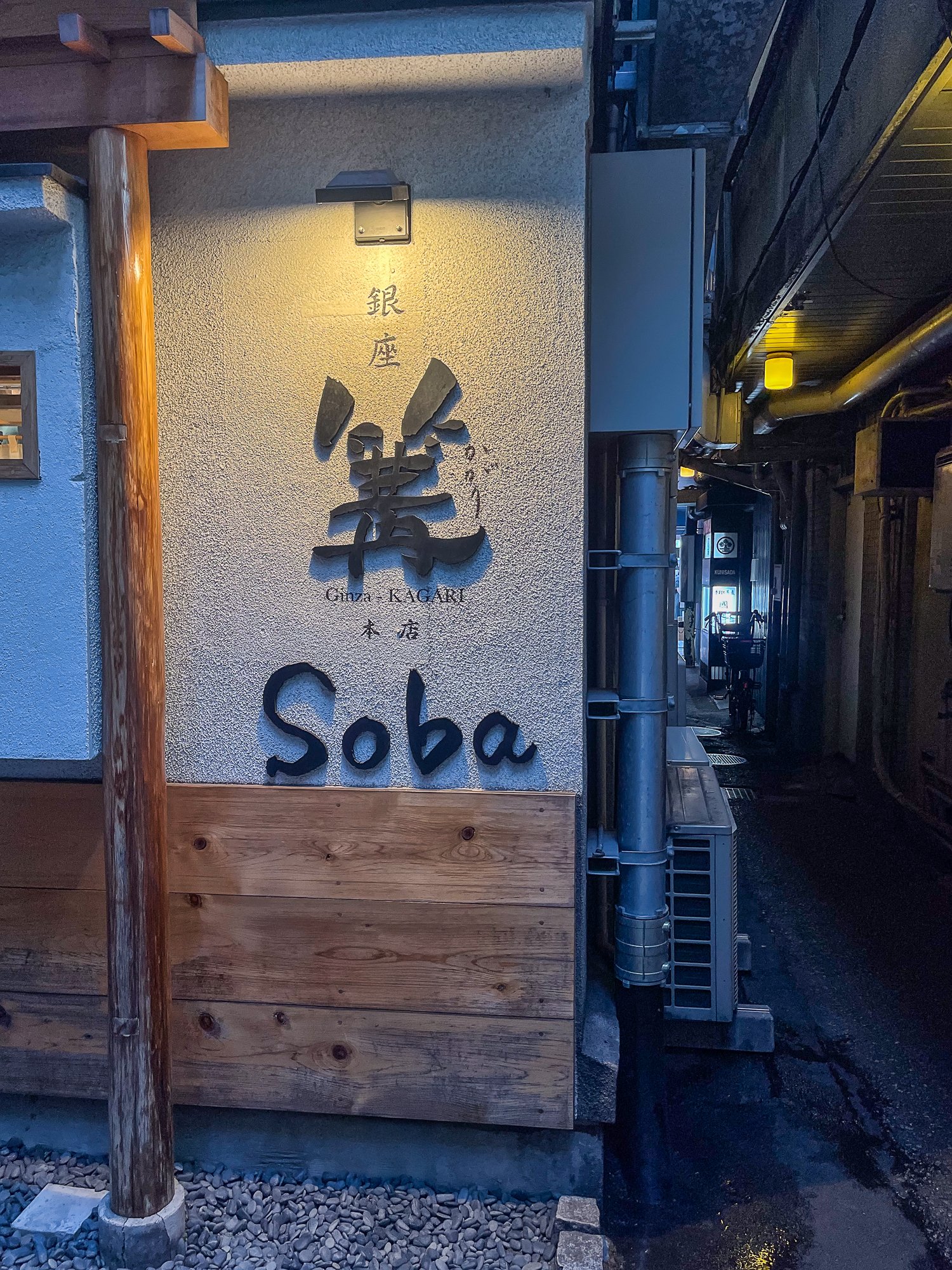

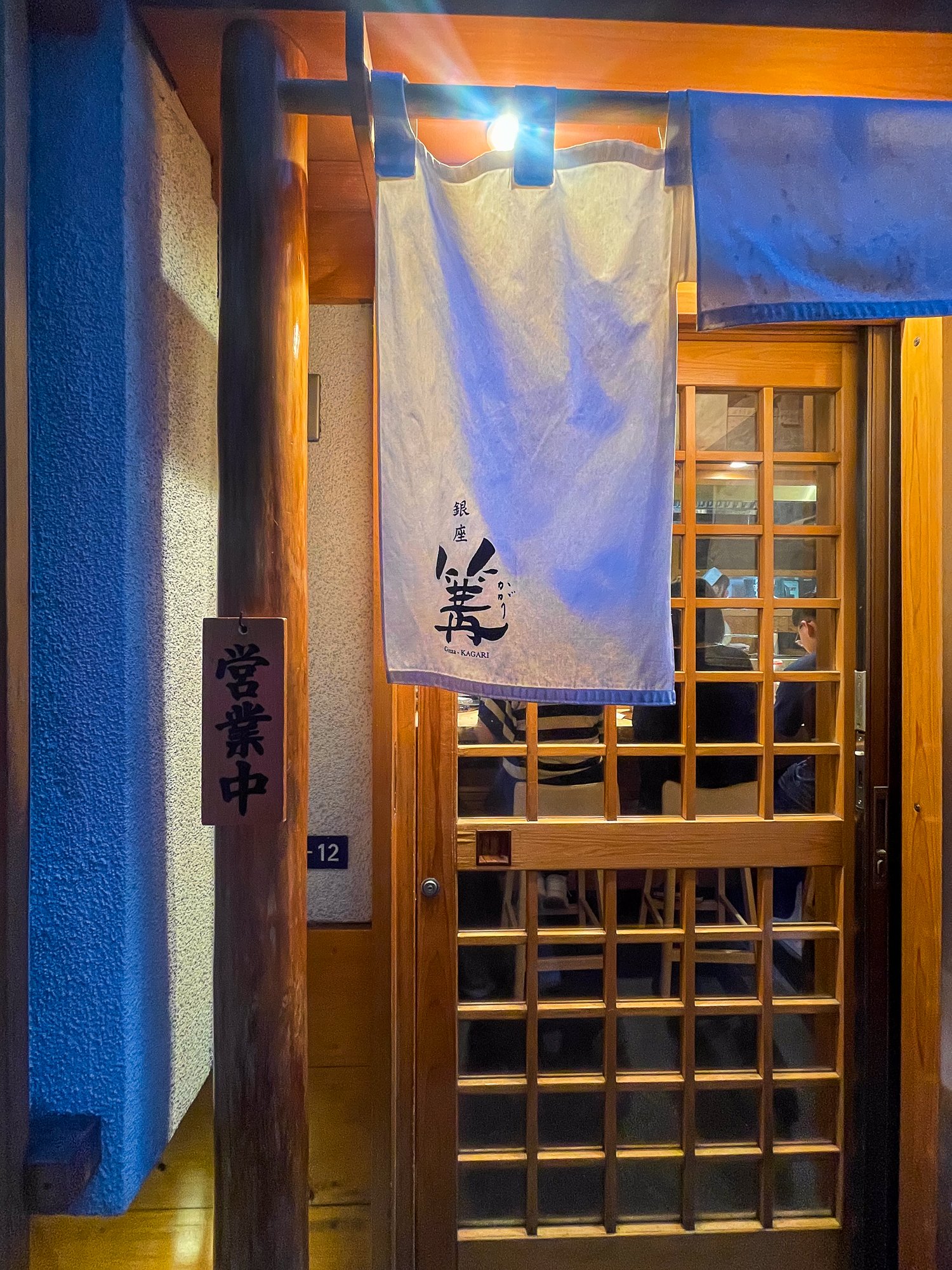
Even though Ginza Kagari Soba has Michelin Bib Gourmand recognition, it feels very down-to-earth. The space is tiny—just a few seats around a U-shaped counter that looks very much like a sushi bar. Prices are totally reasonable, but the quality is next level.
Now, the catch: as mentioned before, there’s a line. Actually, two—one to place your order, and another to wait for a seat. All in all, it took us about an hour, but honestly, the time passed quickly, and the quality of the food was worth it.
Chociaż Ginza Kagari Soba ma wyróżnienie Michelin Bib Gourmand, miejsce to ma absolutnie zero nadęcia. Lokal jest malutki — zaledwie kilka miejsc przy ladzie w kształcie litery U, co wygląda jak typowy bar sushi. Ceny są też bardzo przystępne, natomiast jakość jedzenia to poziom z wysokiej półki.
I teraz haczyk: jak już wspomniano, jest kolejka. Właściwie dwie — jedna do złożenia zamówienia, druga do czekania na miejsce. W sumie zajęły nam one około godziny, ale szczerze mówiąc, czas zleciał szybko, a jedzenie było warte każdej minuty.
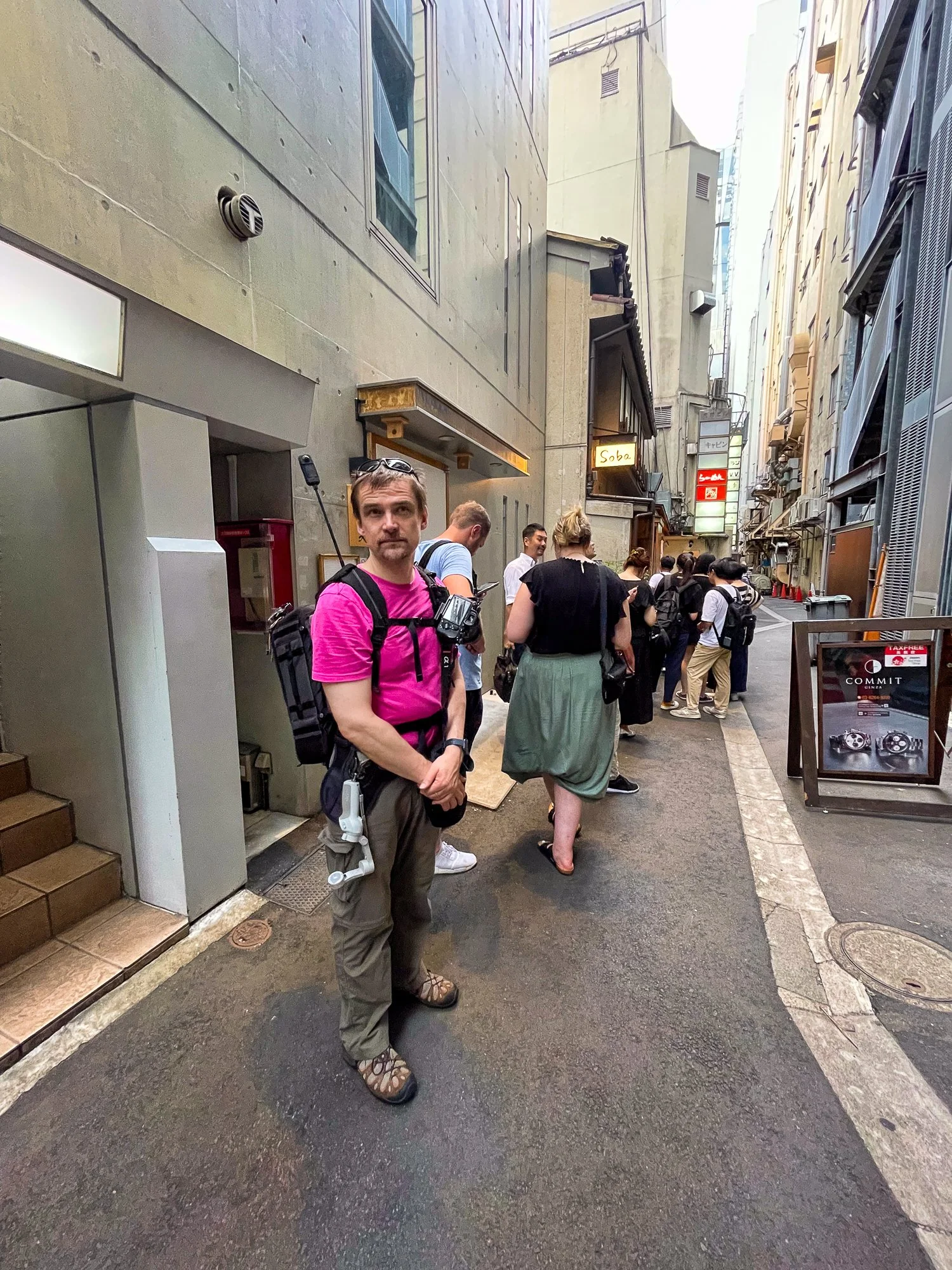





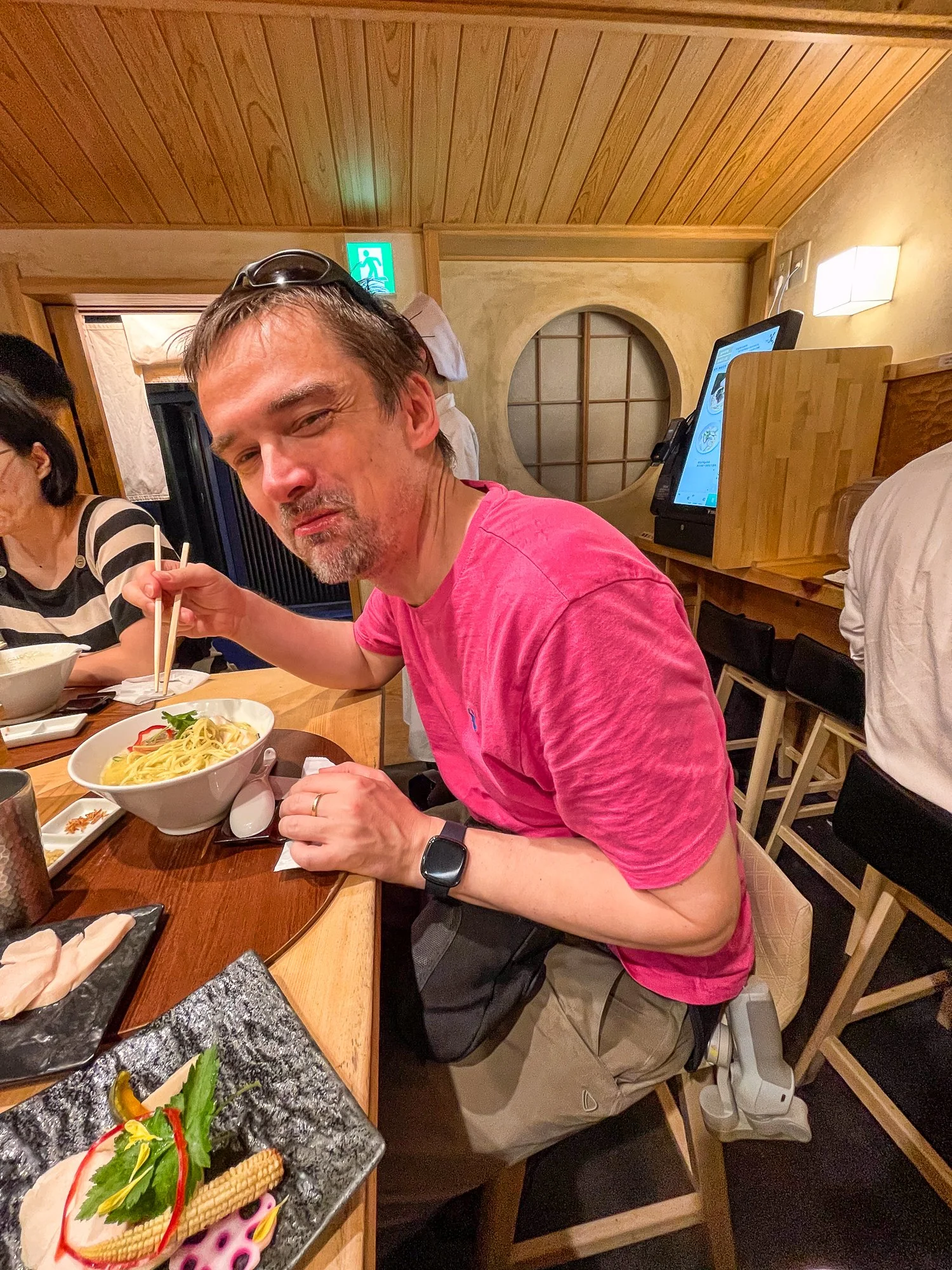



After the meal, we took a narrow path pathway that led us around to the other side of the building. To our surprise, we found a charming little street lit up with colourful neon signs Naturally, we stopped to take a few photos.
Po posiłku zaciekawiło nas przez bardzo wąskie przejście, które prowadziło na drugą stronę budynku. Ku naszemu zaskoczeniu trafiliśmy na urokliwą uliczkę rozświetloną kolorowymi neonami. Oczywiście zatrzymaliśmy się, żeby zrobić kilka zdjęć.
































